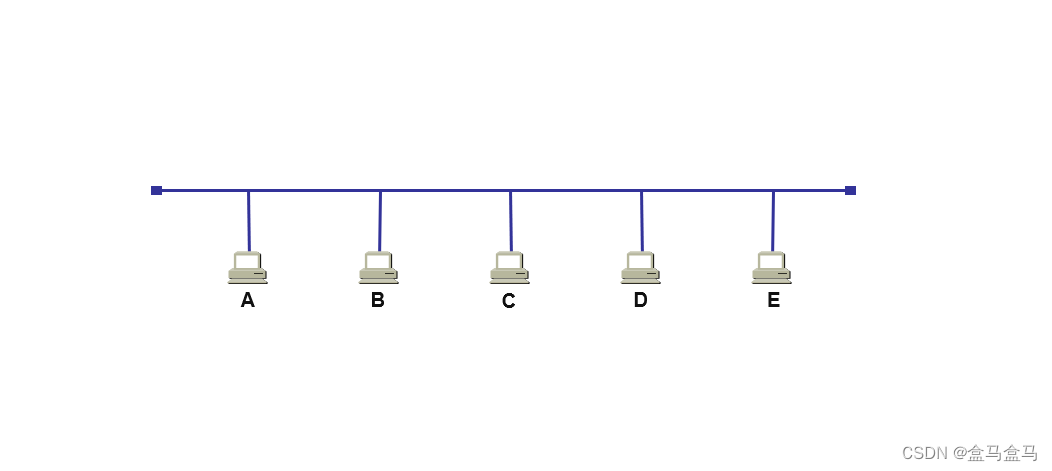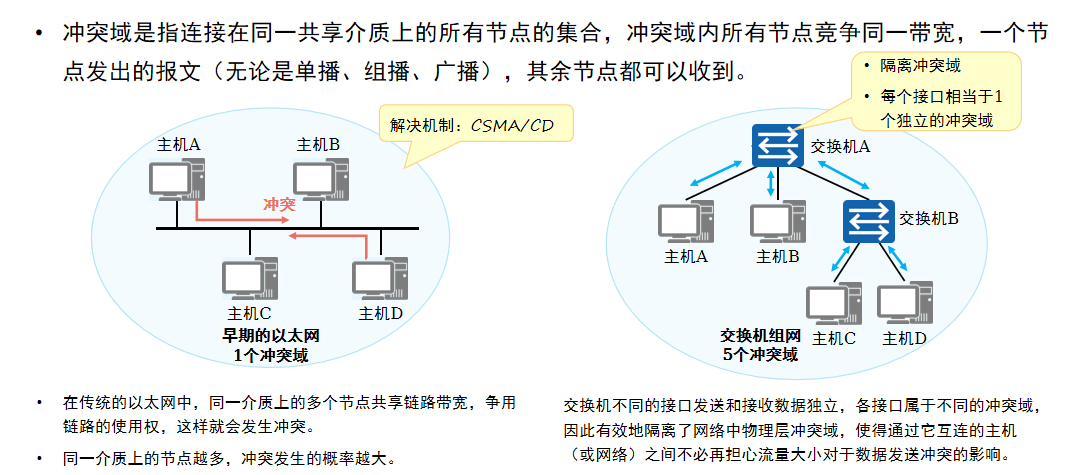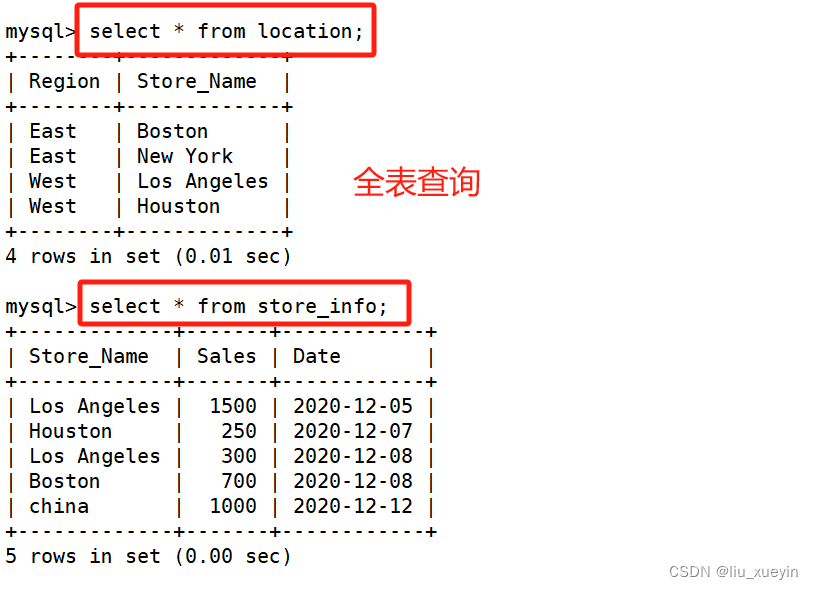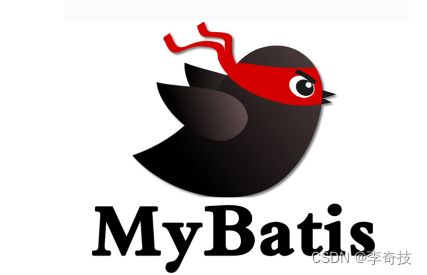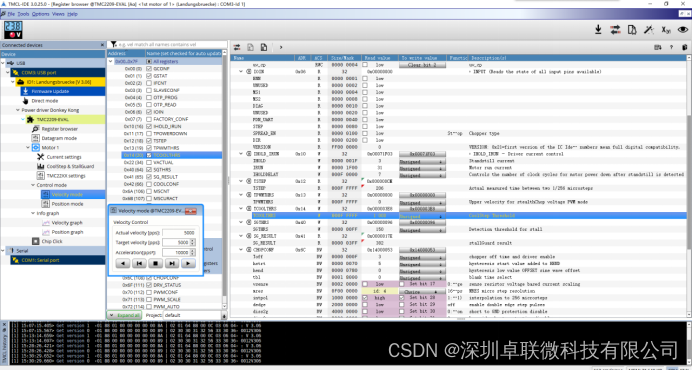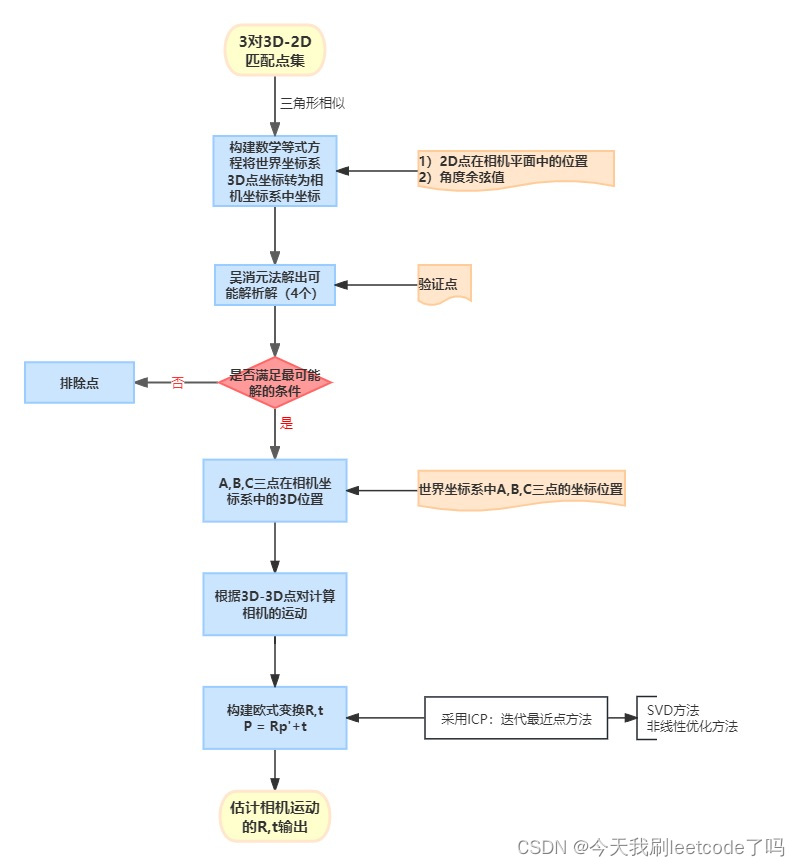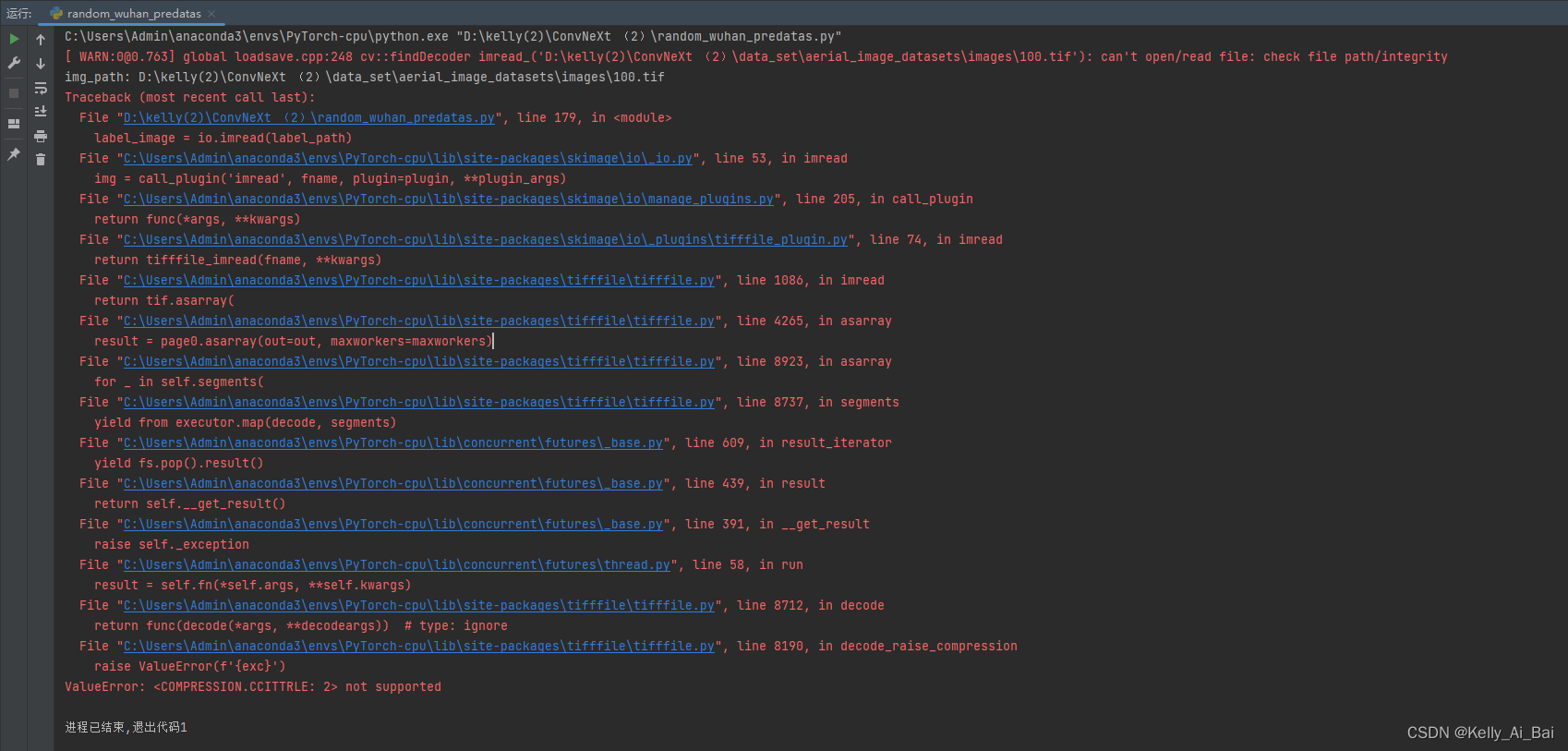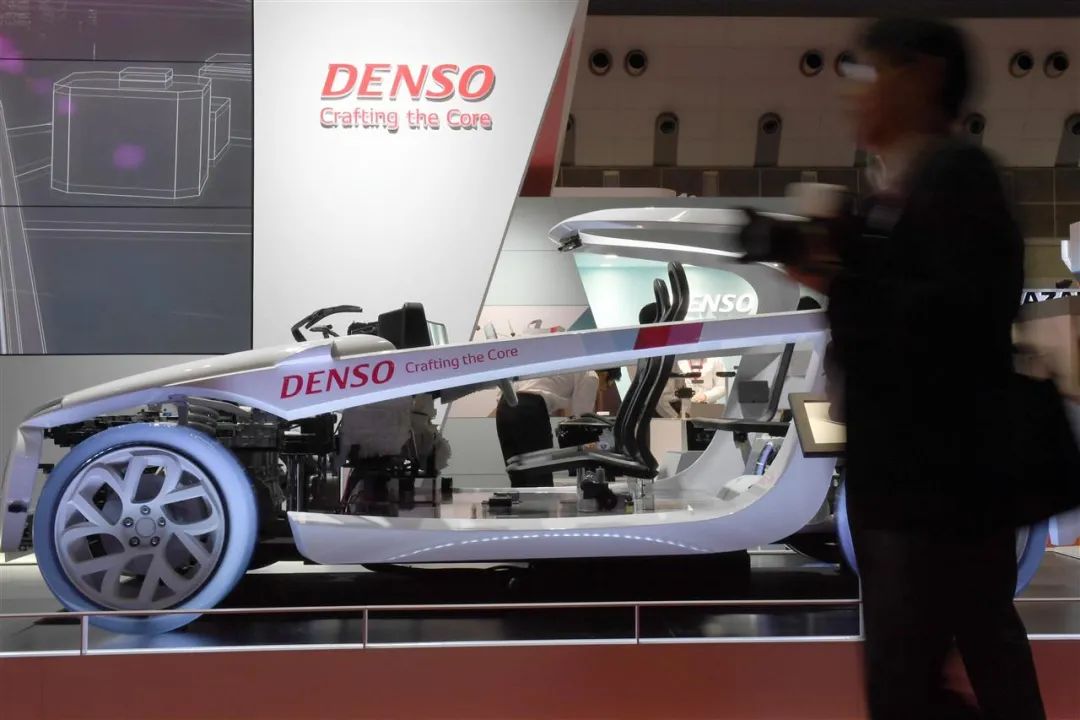Slow-drain
Figure 7-8 explains when Host-1 has a slower processing rate as compared to the rate at which frames are delivered to it (slow-drain). But its link is not fully utilized. For example, Host-1 connects to Leaf-6 at 10 GbE but it can receive traffic only at 5 Gbps because of some other problem within Host-1, which is preventing it from processing more than 5 Gbps of ingress traffic and hence, it invokes PFC. 图 7-8 解释了当Host-1 的处理速度低于向其传输帧的速度时(慢排空)的情况。但它的链路并未得到充分利用。例如,Host-1 以 10 GbE 连接到 Leaf-6,但它只能以 5 Gbps 的速度接收流量,这是因为 Host-1 内部存在其他问题,导致它无法处理超过 5 Gbps 的入口流量,因此它调用了 PFC。
Over-utilization of host-edge link主机边缘链路的过度使用
Congestion due to over-utilization happens when Host-1 can process the ingress traffic at the full capacity of its link (10 Gbps). It is not invoking PFC. However, Leaf-6 is being delivered more traffic (for example, 11 Gbps) than can be sent to Host-1, and therefore Leaf-6 invokes PFC to slow down the traffic from the spine switches. 当 Host-1 能够以其链路的全部容量(10 Gbps)处理入口流量时,就会出现因过度使用而导致的拥塞。它没有调用 PFC。然而,Leaf-6 接收到的流量(例如 11 Gbps)超过了可以发送到 Host-1 的流量,因此 Leaf-6 调用 PFC 来减缓来自骨干交换机的流量。
Comparing Congestion due to Slow-drain and Over-utilization因排空缓慢和过度使用造成的拥堵比较
The effect on the fabric is the same when congestion is caused by a slow-drain device or over-utilization of a host-edge link. 如果拥塞是由慢排空设备或过度使用主机边缘链路造成的,那么对结构的影响也是一样的。
The difference lies in the edge switchports. When congestion is caused by slow-drain, the culprit-connected edge switchport receives many Pause frames and its egress utilization is not high. In contrast, when congestion is caused by over-utilization, the edge switchport does not receive Pause frames and the egress utilization is high. This difference makes the foundation for detecting the cause of congestion. 区别在于边缘交换端口。当拥塞由慢排空引起时,连接的边缘交换端口会收到很多暂停帧,其出口利用率并不高。相反,当拥塞由过度使用造成时,边缘交换端口不会收到暂停帧,而出口利用率却很高。这种差异是检测拥塞原因的基础。
Detecting Congestion in Lossless Ethernet Networks检测无损以太网网络中的拥塞问题
The following are the key factors for congestion detection workflow in lossless Ethernet networks. 以下是无损以太网网络拥塞检测工作流程的关键因素。
![]() What to detect. 检测到什么
What to detect. 检测到什么
![]() What is the effect of congestion? In other words, how severe is it? 拥堵的影响是什么?换句话说,有多严重?
What is the effect of congestion? In other words, how severe is it? 拥堵的影响是什么?换句话说,有多严重?
![]() What is the cause of congestion? 拥堵的原因是什么?
What is the cause of congestion? 拥堵的原因是什么?
![]() Where is the source of congestion (culprits)? 拥堵的根源(罪魁祸首)在哪里?
Where is the source of congestion (culprits)? 拥堵的根源(罪魁祸首)在哪里?
![]() Where is the spread of congestion (victims)? 拥堵(受害者)扩散到哪里?
Where is the spread of congestion (victims)? 拥堵(受害者)扩散到哪里?
![]() When did congestion happen? 拥堵是什么时候发生的?
When did congestion happen? 拥堵是什么时候发生的?
![]() How to detect: 如何检测
How to detect: 如何检测
![]() Reactive approach: Detect and troubleshoot congestion events after they happen. 反应式方法: 在拥堵事件发生后进行检测并排除故障。
Reactive approach: Detect and troubleshoot congestion events after they happen. 反应式方法: 在拥堵事件发生后进行检测并排除故障。
![]() Proactive: Detect congestion events in real time. 积极应对: 实时检测拥堵事件。
Proactive: Detect congestion events in real time. 积极应对: 实时检测拥堵事件。
![]() Predictive: Predict congestion events before they happen. 预测性: 在拥堵事件发生之前进行预测。
Predictive: Predict congestion events before they happen. 预测性: 在拥堵事件发生之前进行预测。
![]() Where to Detect从何处检测
Where to Detect从何处检测
![]() Natively on the devices, such as switches, hosts/servers, or storage arrays. 在交换机、主机/服务器或存储阵列等设备上运行。
Natively on the devices, such as switches, hosts/servers, or storage arrays. 在交换机、主机/服务器或存储阵列等设备上运行。
![]() Using remote monitoring platforms, such as the UCS Traffic Monitoring App, as explained in Chapter 9. 使用远程监控平台,如 UCS 流量监控应用程序,详见第 9 章。
Using remote monitoring platforms, such as the UCS Traffic Monitoring App, as explained in Chapter 9. 使用远程监控平台,如 UCS 流量监控应用程序,详见第 9 章。
Refer to Chapter 3, “Detecting Congestion in Fibre Channel Fabrics,”, the section on “Congestion Detection Workflow” for a detailed explanation of these topics. The same details also apply to lossless Ethernet networks; hence they are not repeated here. This section provides only a brief overview as it applies to lossless Ethernet networks. 有关这些主题的详细说明,请参阅第 3 章 "检测光纤通道 Fabric 中的拥塞 "中的 "拥塞检测工作流程 "一节。同样的细节也适用于无损以太网网络,因此在此不再赘述。本节仅提供适用于无损以太网网络的简要概述。
Congestion Direction — Ingress or Egress
Congestion is directional. Congestion usually occurs in one direction, while the reverse direction may be uncongested. Attempting to follow the congestion in the wrong direction does not lead to finding the source and the cause of it. 拥塞是有方向性的。拥塞通常发生在一个方向,而反方向可能不拥塞。试图沿着错误的方向追踪拥塞情况,并不能找到拥塞的源头和原因。
For example, in the spine-leaf network shown in Figure 7-8, on the spine switches, only the traffic in the direction of Leaf-6 is affected by congestion. Traffic coming from Leaf-6 to the spine switches is not affected by congestion. 例如,在图 7-8 所示的脊叶网络中,在骨干交换机上,只有叶 6 方向的流量会受到拥塞的影响。从 Leaf-6 到骨干交换机的流量不受拥塞影响。
Congestion on an egress switchport results in congestion on an ingress port, which causes egress congestion on at least some upstream ports along the traffic path toward the source. In other words, egress congestion causes ingress congestion. Ingress congestion does not cause egress congestion. Because of this reason, congestion detection workflow and metrics in the egress direction are more important for identifying the source of congestion. 出口交换端口的拥塞会导致入口端口的拥塞,而入口端口的拥塞又会导致流向源的流量路径上至少一些上游端口的出口拥塞。换句话说,出口拥塞会导致入口拥塞。入口






